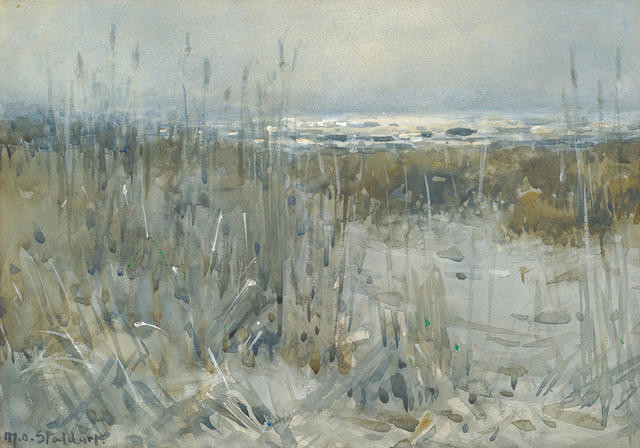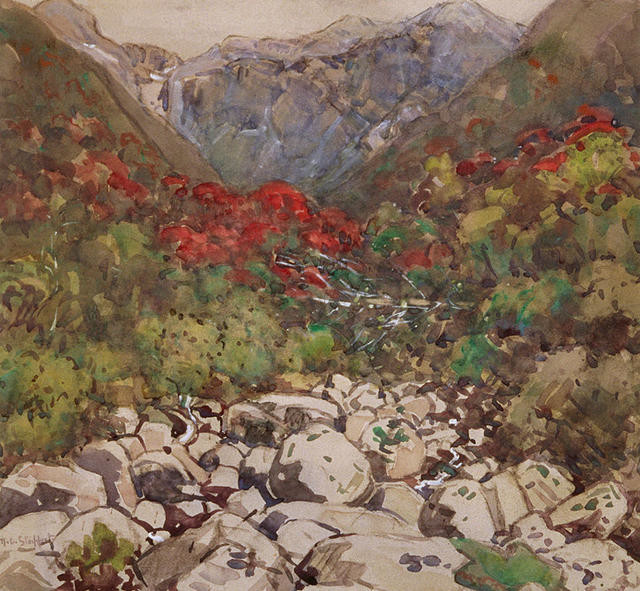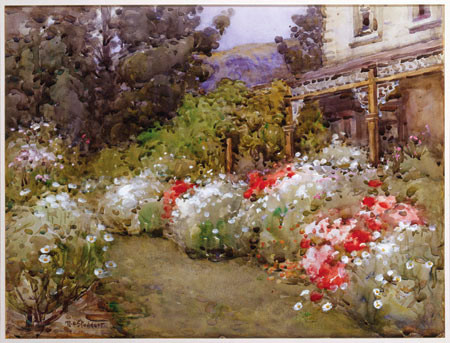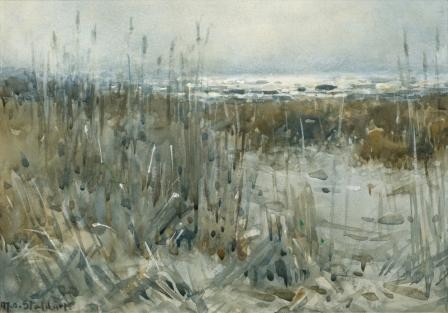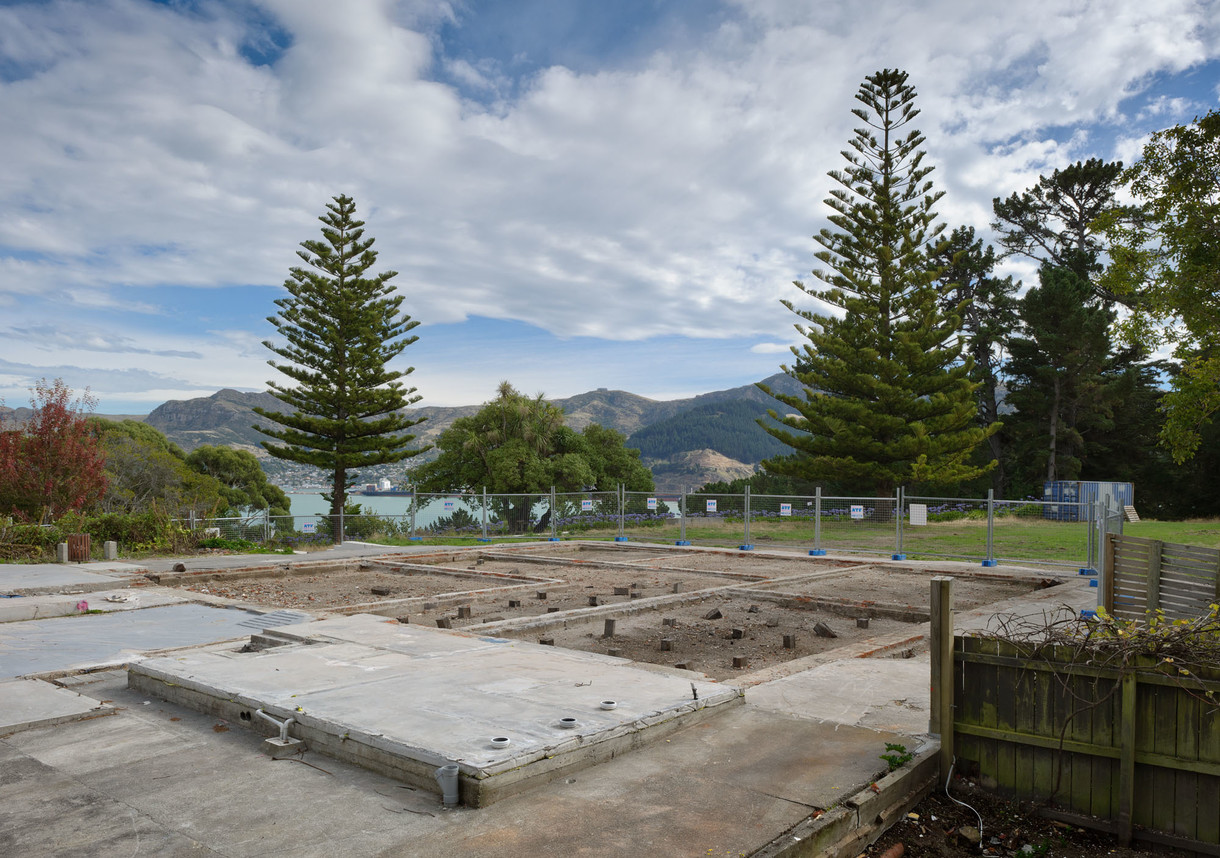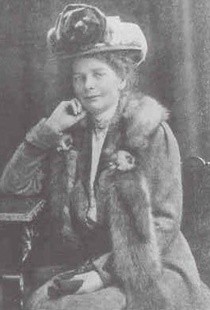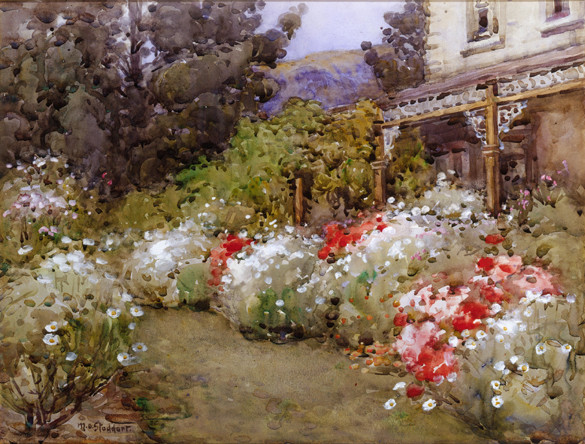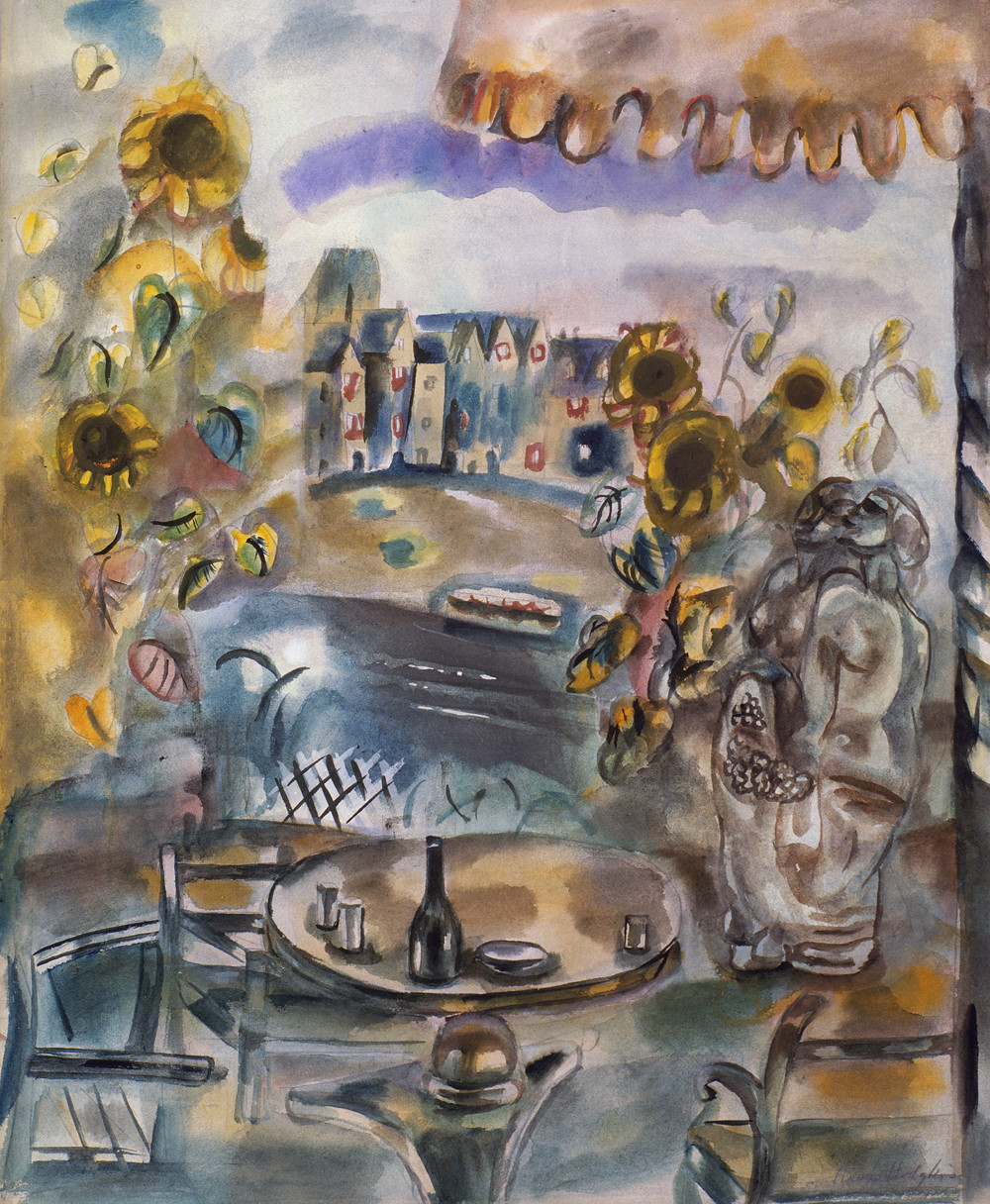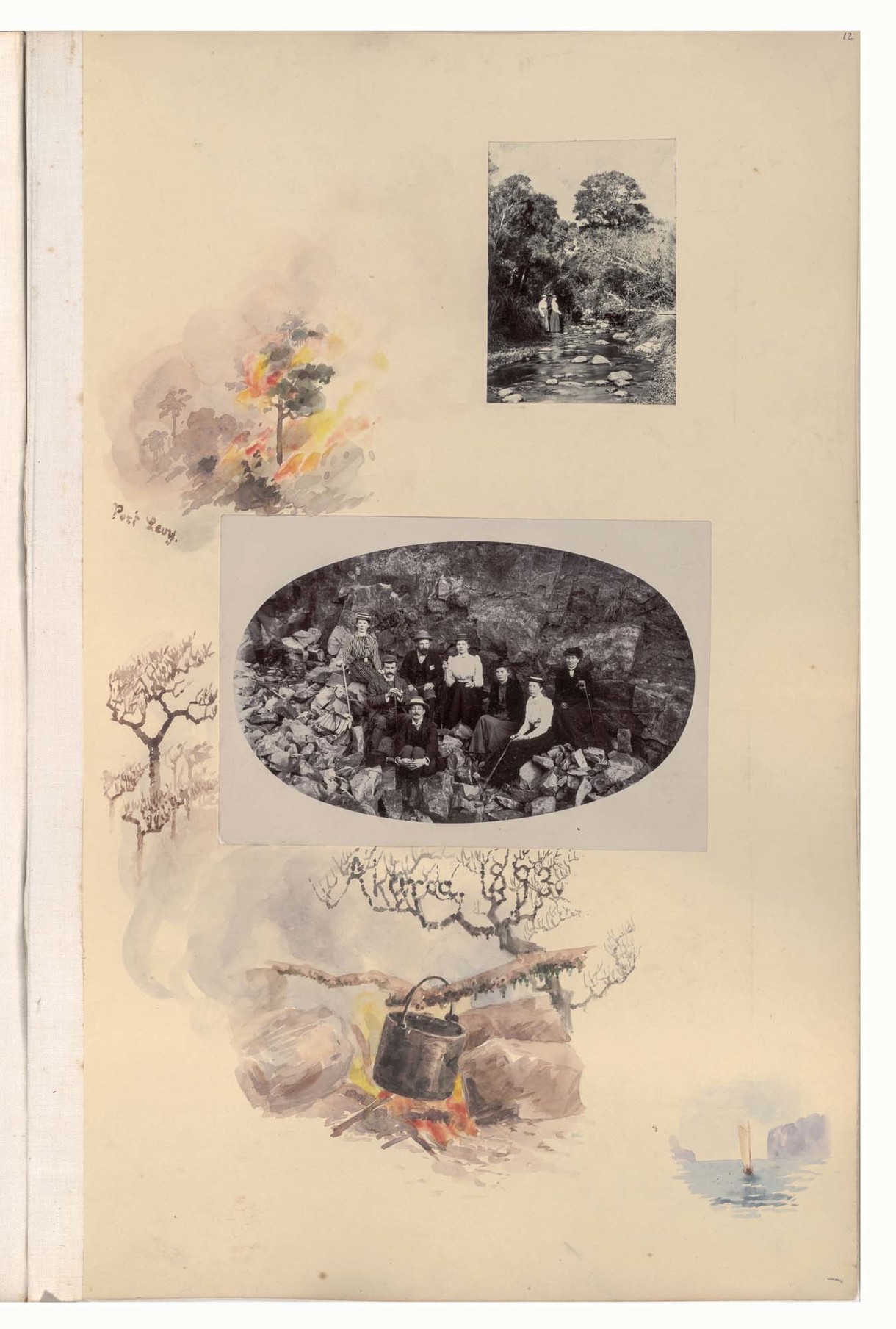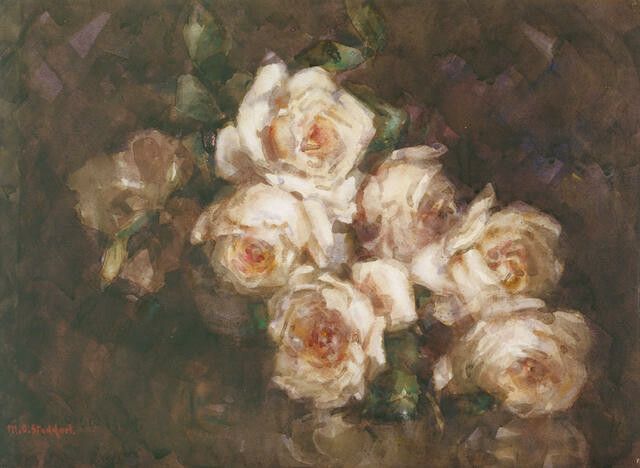B.
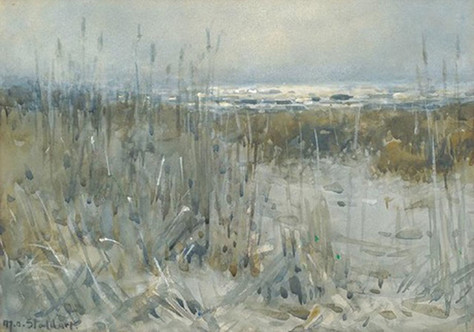
Margaret Stoddart New Brighton. Watercolour. Collection of Christchurch Art Gallery Te Puna o Waiwhetū, gifted by William Ainslie Reece 2011
New Brighton by Margaret Stoddart
Collection
This article first appeared as 'Stoddart: an artist for all seasons' in The Press on 17 November 2015.
I've always been fond of windswept beaches. Well, you might say, it's a good thing you live in Christchurch then. It's true that growing up here – where golden sands and baking sun appear most frequently on the windows of travel agents – might have influenced my preferences, as might a love of dogs, who like nothing better than free-ranging on a wild coast, sniffing and rolling in whatever the squally weather might have blown up on shore.
For artist Margaret Stoddart, such scenes were an enduring source of inspiration. Born 150 years ago in a modest prefabricated cottage at Diamond Harbour (named by her father Mark after the sunlight that sparkled over the water), Stoddart belonged to a family that appreciated both art and nature. As a foundation student at the newly opened Canterbury College School of Art, her interest in indigenous plants was encouraged, with new specimens brought in weekly for examination and sketching. She was also an early member of the 'Palette Club', an association of Christchurch artists founded in 1889 that was dedicated to working en plein air, in direct response to nature. Letters to her friend Rosa Dixon record her response to the landscape – and her willingness to venture out in all weathers: "You should have seen the effect of the hills round Pigeon Bay in the storm on Saturday, the tops were white with snow, they seemed to tower up into the sky through the storm".
As well as capturing familiar scenes around Banks Peninsula (an acquaintance recalls nearly parting company with his horse when it was startled by the painter, tucked into a crevice, studying a mountain daisy), Stoddart sketched and 'botanised' throughout the Mount Cook region, often walking long distances over rough terrain despite restrictive colonial attire to search out rare plants and compelling views of the high country. She also sketched regularly at Sumner and New Brighton, capturing the coastline in various conditions. This fresh and breezy watercolour of sandhills, grasses and foam-capped waves is a recent addition to Christchurch Art Gallery's collection – one of several works that were donated to us in the months following the 2011 earthquake. New Brighton was the gift of William Ainslie Reece, whose grandfather Edward Thomas Reece is thought to have purchased it directly from the artist in the 1920s. With a viewpoint that places us directly amongst the dunes, Stoddart's keen observations of her surroundings and confident technique convey her setting so convincingly that you can almost taste the salty sea air. New Brighton will be on show alongside a selection of Stoddart's flower and landscape paintings when the Gallery reopens in December.
